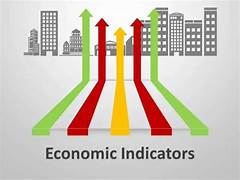In recent weeks, two key recession indicators have stirred some concerns, causing investors to keep a watchful eye on the economic landscape. The first, known as the Sahm Rule, gauges a potential recession when the three-month average of the unemployment rate rises 50 basis points above its 12-month low. The second indicator involves an uninverting yield curve, historically signaling an impending recession when the 2- and 10-year US Treasury yields converge. Despite the proximity of these indicators to flashing, investors can find reassurance in the nuanced factors driving these economic signals.
The Sahm Rule, developed by former Fed economist Claudia Sahm, has historically proven highly accurate in predicting recessions. However, Carson Group’s global macro strategist Sonu Varghese suggests a different narrative this time. The recent rise in unemployment, a crucial component of the Sahm Rule, is attributed to an increase in labor supply, fueled in part by higher immigration. With the labor force growing at an annualized pace nearly double the pre-pandemic rate, more workers are entering the job market than jobs are being created. Varghese emphasizes that the unique circumstances surrounding this increase in unemployment might not necessarily indicate an imminent recession.
The second indicator, the uninverting yield curve, typically sets off alarms among investors as a reliable predictor of recessions. Traditionally, recessions occurred shortly after the yield curve returned to positive territory following an inversion. However, Varghese remains unfazed, pointing out that historical uninversions were often accompanied by the Federal Reserve rapidly lowering short-term rates amid a slowing economy. In the current scenario, the yield curve is narrowing due to the rise in long-term yields, driven by optimistic economic growth prospects. This deviation from historical norms suggests a more complex economic landscape.
It’s crucial for investors to recognize the broader context shaping these indicators. While economic signals play a vital role in guiding investment decisions, interpreting them within the context of evolving economic dynamics is equally essential. The surge in labor supply, attributed to increased immigration, challenges the traditional understanding of rising unemployment as a red flag for an imminent recession. Similarly, the narrowing yield curve, driven by upward-trending long-term yields, paints a different picture compared to historical instances.
Investors are encouraged to approach these indicators with a balanced perspective, acknowledging the distinctive factors influencing the current economic landscape. The global macroeconomic environment is subject to continual change, and the traditional playbook may not necessarily align with today’s circumstances. As the markets navigate these indicators, staying informed and considering the broader economic context can contribute to a more nuanced and resilient investment strategy.













